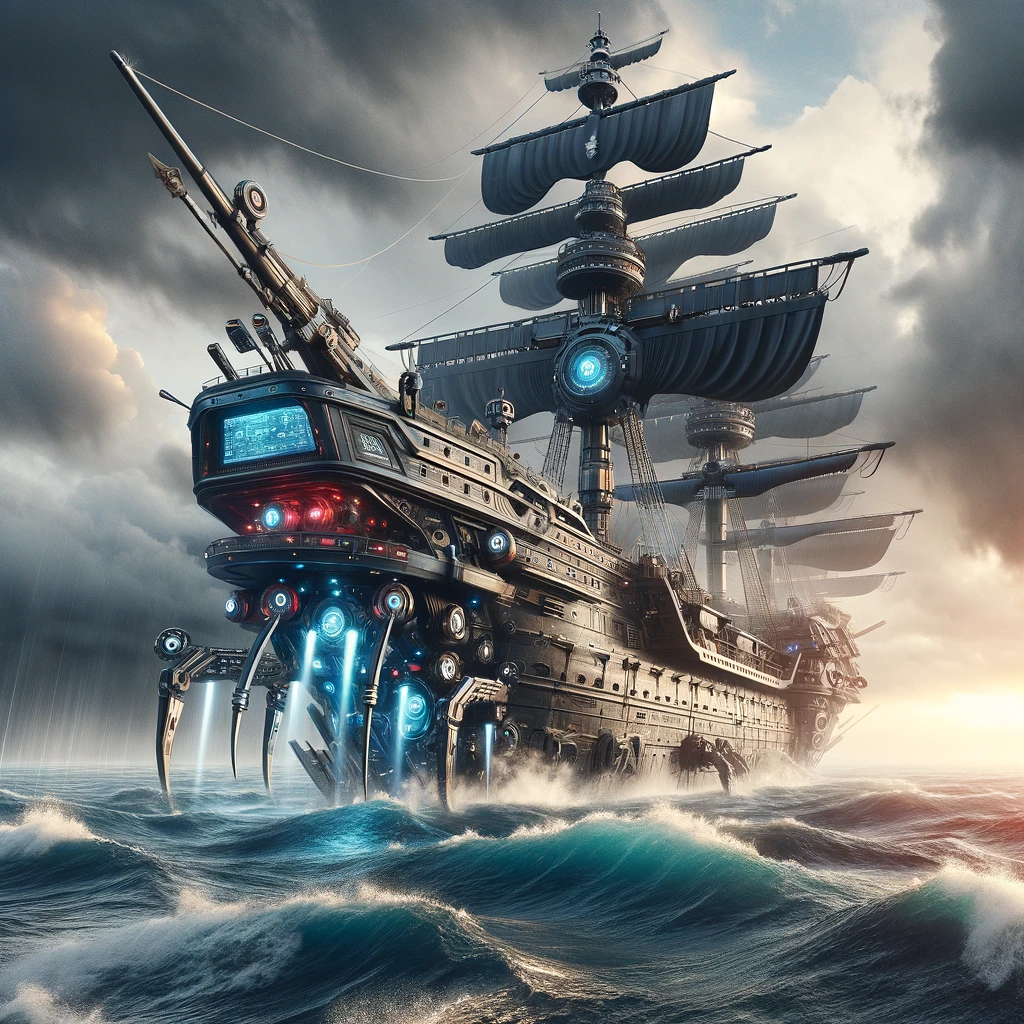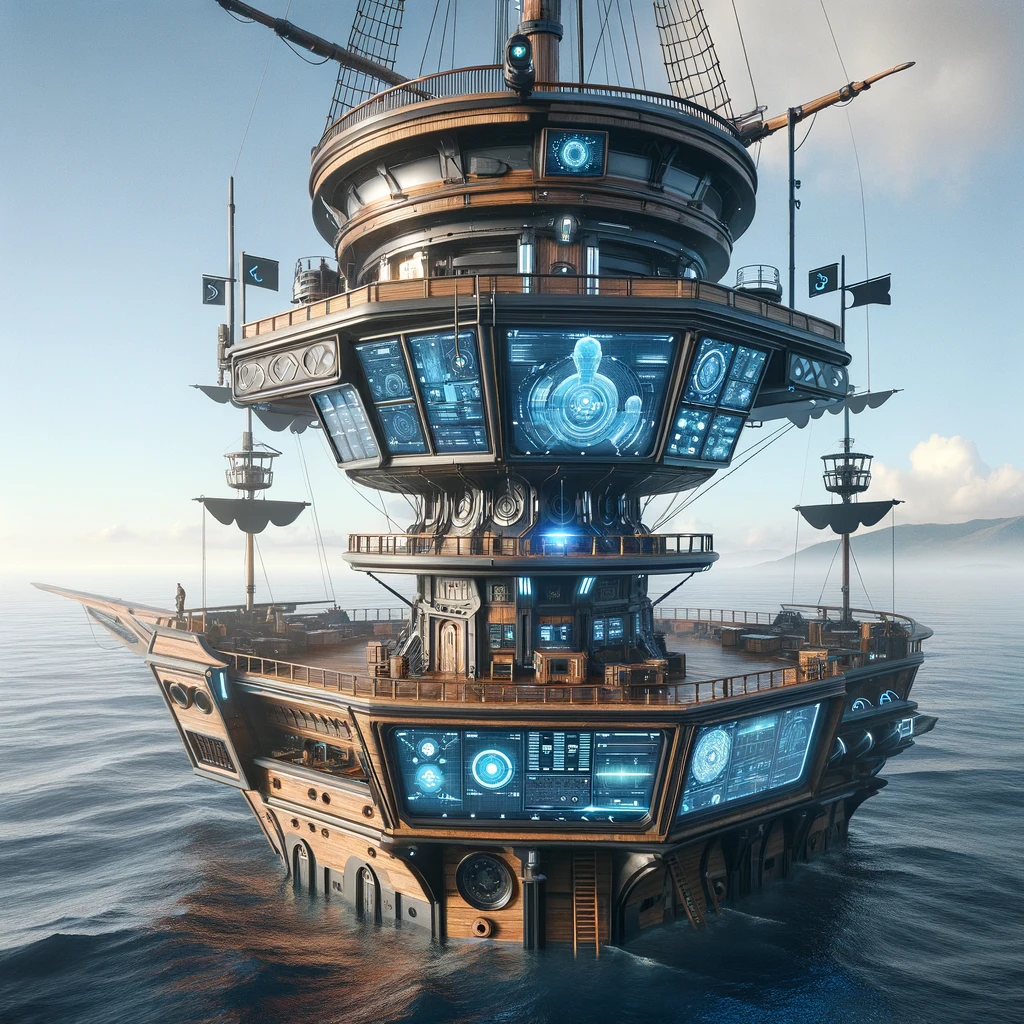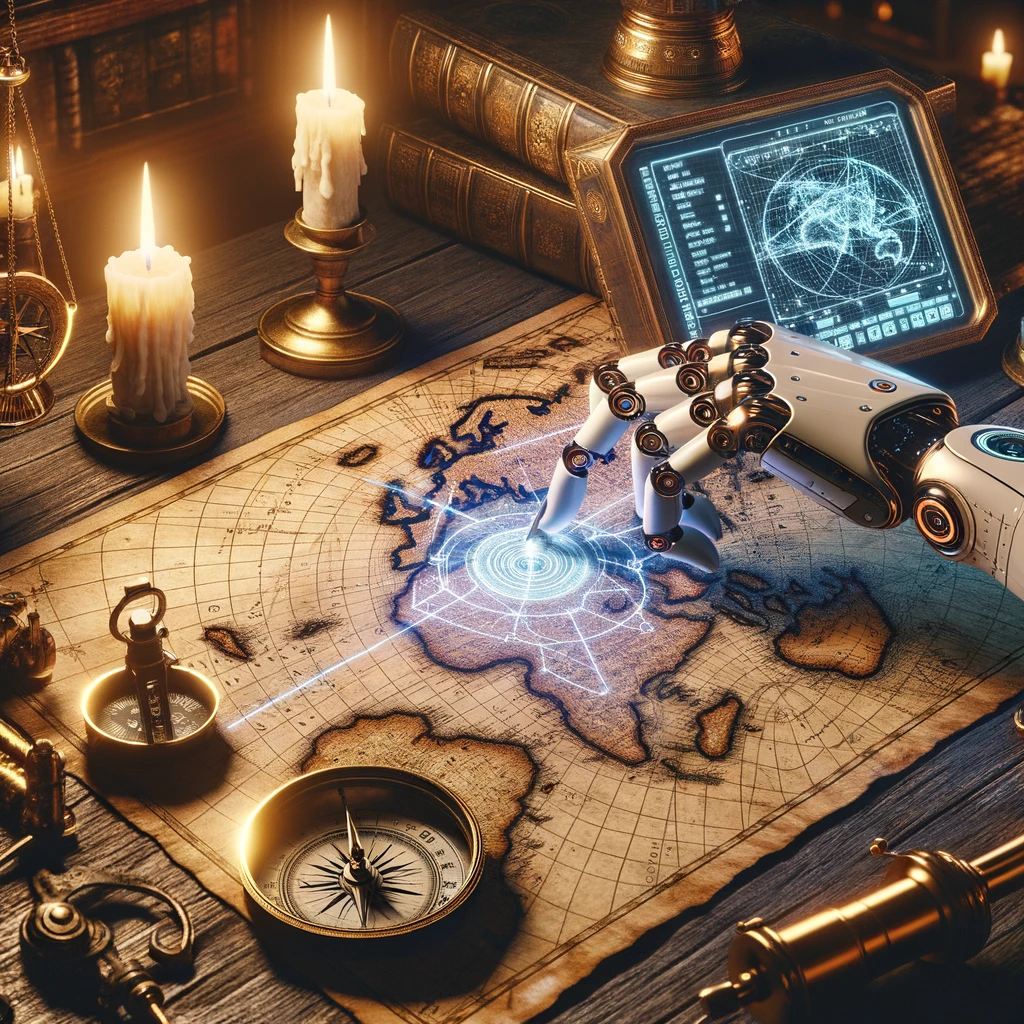Re-envisioning the Era of Blackbeard with Artificial Intelligence
By: ChatGPT
Originally Generated: November 10, 2023
Introduction: Sailing Through Time with AI
In this article, we delve into a fascinating thought experiment: What if artificial intelligence (AI) existed during the Golden Age of Piracy, particularly during the era of the infamous pirate Blackbeard? This period, stretching from the 1650s to the 1730s, was marked by maritime piracy in the North Atlantic and Indian Oceans. Blackbeard, also known as Edward Teach, was a legendary figure in this era, known for his brutality, intelligence, and strategic prowess. We’ll reimagine how AI could have altered the course of piracy and Blackbeard’s reign.
AI on the High Seas: A Hypothetical Scenario
Imagine a world where Blackbeard had access to AI technologies. How might this have transformed his tactics and strategies?

AI-Enhanced Navigation and Strategy
With AI, Blackbeard’s navigation and strategic planning could have reached new heights. AI algorithms could have analyzed weather patterns, optimized sailing routes, and even predicted the movements of merchant ships and naval fleets. This would have made his infamous ship, the Queen Anne’s Revenge, not just a fearsome vessel armed with 40 cannons, but a smart one, capable of outmaneuvering opponents with data-driven precision.
Automated Surveillance and Threat Detection
AI-powered surveillance systems on the Queen Anne’s Revenge could have provided real-time monitoring of the seas. This would have enabled Blackbeard to identify potential targets or threats at greater distances, giving him a significant advantage in planning attacks or evading capture.

Enhanced Communication and Deception
Blackbeard was known for using deception and surprise to his advantage. AI could have revolutionized this aspect by analyzing communication patterns of enemy ships or ports, enabling more sophisticated deceptive strategies, perhaps even automating false flag operations to mislead adversaries.
AI in Battle: A New Form of Warfare
During the notorious Battle of Ocracoke Inlet, Blackbeard’s cunning was evident. With AI, he could have employed advanced tactical algorithms to analyze enemy formations and weaknesses in real-time, adapting his strategies dynamically during combat.
Ethical and Moral Quandaries
This hypothetical scenario also raises questions about the ethical use of AI in warfare and piracy. Would AI have exacerbated the ruthlessness of piracy, or could it have led to a more strategic, less violent form of maritime confrontation?
Reimagining History: The AI-Piracy Nexus
This exploration is not just a flight of fancy but a way to understand the potential impact of AI on historical events. While AI during Blackbeard’s time is anachronistic, it offers a unique lens to view the intersection of technology and history.
AI’s Role in Historical Analysis
Today’s AI can help us analyze historical data, offering new insights into past events. By simulating historical scenarios with AI, we can gain a deeper understanding of how certain factors might have influenced historical outcomes.

The Ongoing Influence of AI
As AI continues to evolve, its potential to reshape our understanding of history and its application in modern times becomes increasingly significant. This thought experiment highlights the transformative power of AI, both in real and imagined contexts.